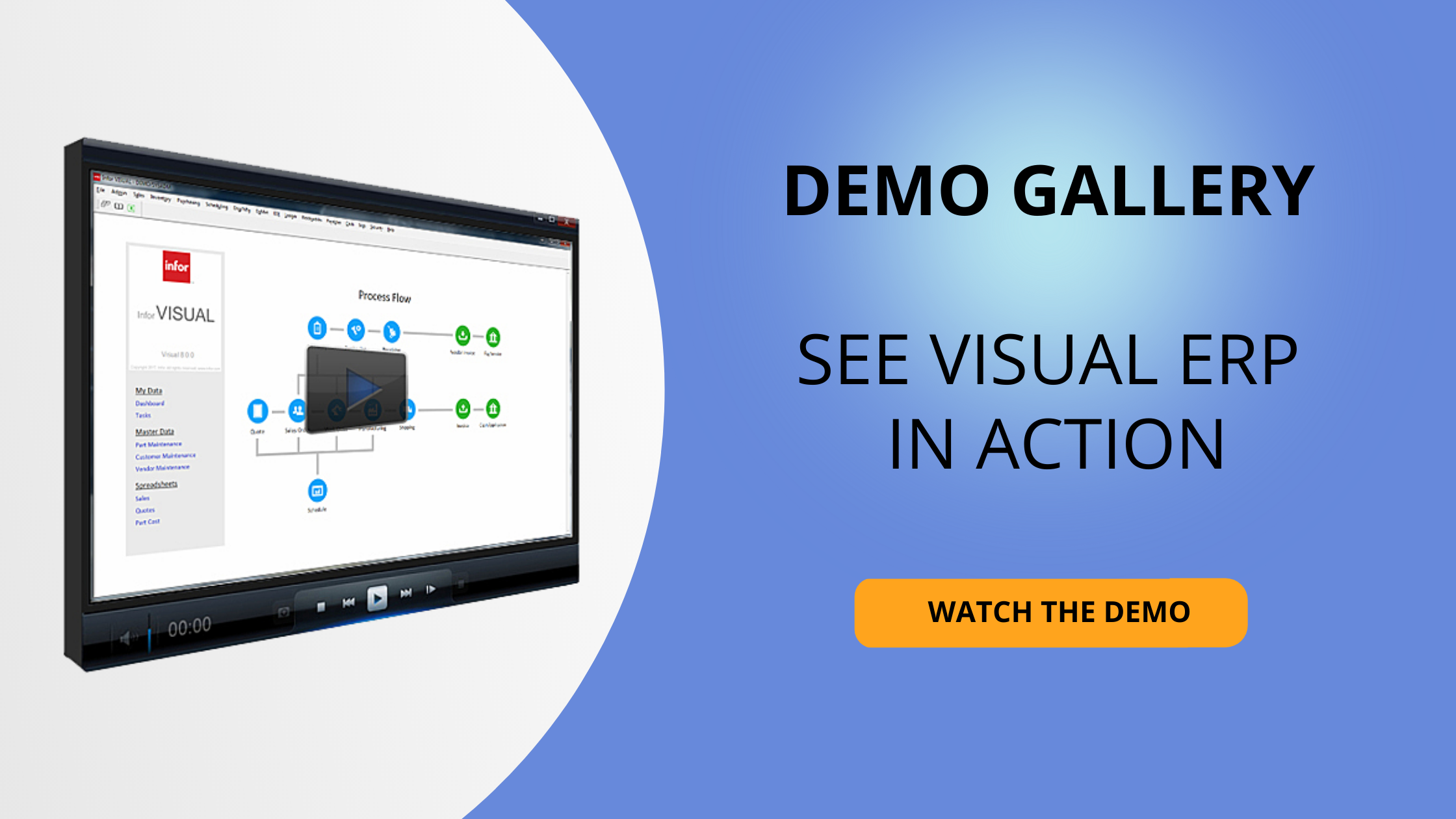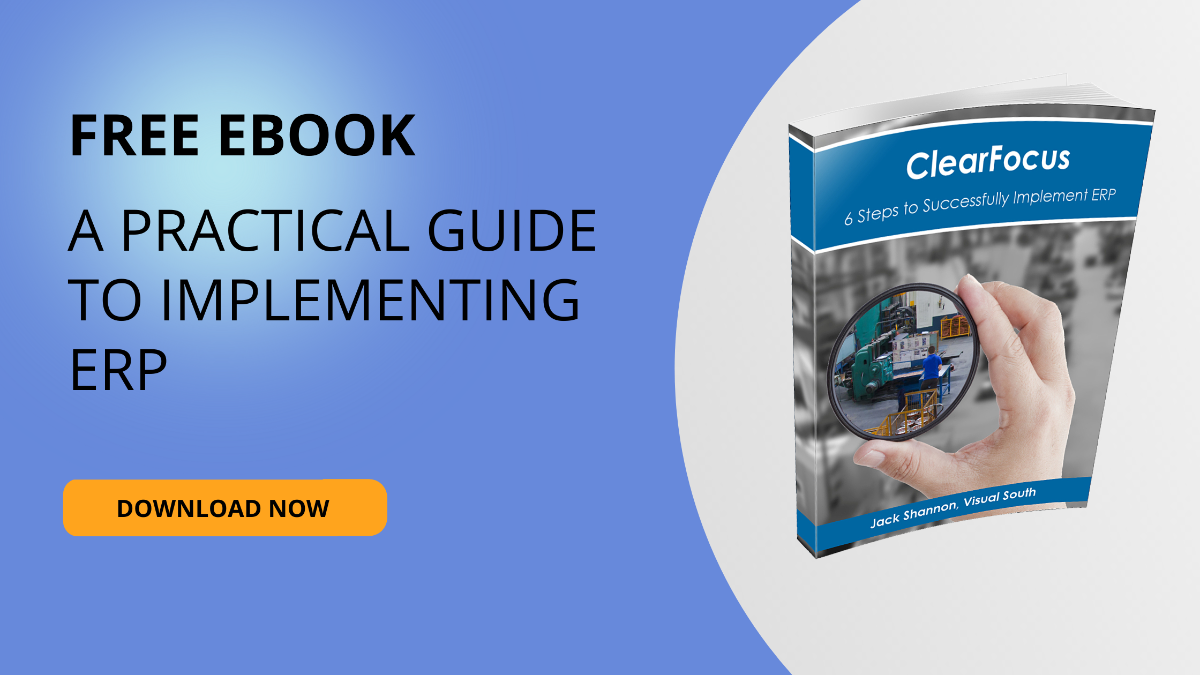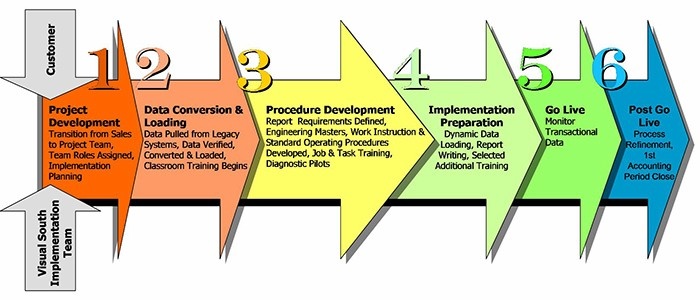Infor is the third largest ERP solutions provider in the world. The two main Infor ERP solutions we (at Visual South) help manufacturers implement are Infor CloudSuite Industrial (Infor SyteLine) and Infor VISUAL. In this guide, we'll take you through everything you need to know about Infor and its ERP software options. Click the links below to jump to specific chapters.
Do You Need ERP?
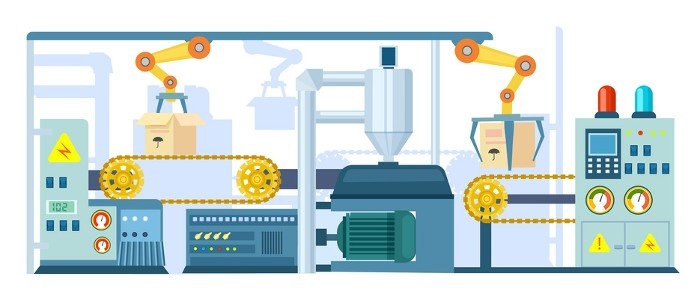
Your current environment
Of the many reasons people look for ERP, there is one common thread: The thought that there has to be a better way. Maybe the business issues you’re trying to solve require more than a new procedure or spreadsheet. Or maybe you need an integrated system that supports a smoother process.
On the surface, it would seem no one would ever want to buy an ERP system. After all, implementing a new system is not easy. Data needs to be converted. New procedures need to be developed. Employees need to be trained. Everything needs to be tested. It costs money. It introduces an element of risk into the business. Last, but not least, who hasn’t heard of an ERP failure?
Companies implement a new ERP system because the costs and risks of not doing it are too high. A properly implemented ERP system allows a company to grow, while slowing the growth of overhead costs. In addition, employees can make better, more informed decisions, fostering productivity and improving job morale.
On the other hand, just because you think your company needs a new ERP system doesn’t mean it does. There are many other issues that can cause the same feeling. Maybe your current ERP system is more than adequate, but needs better procedures. For example, maybe the current ERP and procedures are adequate, but you need better training.
To help you determine if you actually do need a new ERP system, let’s look at the environments our customers come from. In other words, we’ll look at examples of what a company’s system(s) looked like before the new ERP. I’m going to break it down into three groups, but a company can be in more than one group:
- Disparate systems. You have many systems in place with little to no integration between them. This occurs when a company looks for a solution to a specific problem, as opposed to looking for an integrated system for the entire company. Does accounting use a different software package than manufacturing? Are there lots and lots of spreadsheets? Does the same data have to be entered into more than one system? If this sounds like your company, you have disparate systems. This is the environment most of our customers come from.
- In-house system. I’ve seen good ones, and I’ve seen bad ones. Yet they all reflect the terminology and specialization of the business running the software. That’s nice, but there are some pretty significant downsides:
- The company’s core competency is not ERP software development; it’s whatever they make. Hence, the software is not as robust as a fully integrated ERP package. An in-house system is also typically unique in how the data flows through the system. (That’s not a compliment.)
- The company is exposed to a fair amount of risk. Usually, the software is created by a single person. If something happens to that person, the company is going to travel a painful, expensive road to keep the software going.
- Building a software package for one company is expensive. In addition, the person who wrote it is the only person on the planet who can troubleshoot issues or make changes. This essentially creates a monopoly for that person, and your invoices will usually reflect this.
- Existing, but limited ERP. This is a natural progression when a smaller company grows. Outgrowing software is a sign of success! But a common trap companies fall into is trying to add the functionality they need via a software solution for a specific issue. That works temporarily, but adding point solution after point solution gets complicated. Next thing you know, you’ll move into the “disparate systems” group.
Notice there isn’t a “We hate our current ERP” group. If that’s your only reason and you don’t fit into one of the environments described above, you may not need ERP. That’s because hate is an emotion and money is math. There’s no question that users frustrated with their ERP can create a ground swell of support to replace it. That feeling is real and can stir a lot of emotions. The problem is, it’s only emotion and you can’t buy a new ERP with emotion. It takes money and that’s where the math comes in. For a company to buy a new ERP, it will have two sets of costs: software and implementation. If the company hires experts to train users on the current ERP software, there’s only one set of costs: training. Money will be spent in either case, but getting training on a current system is the most economical way to fix ERP issues. We all get frustrated if we need to use something we don’t understand.
Related:
Are You Ready to Move On From QuickBooks or Peachtree?
How to Determine If Your Manufacturing ERP Software is Failing You
ERP Integration Considerations for Manufacturers
Consequences of your current environment
The three environments described above have consequences and can lead to a culture in the organization that’s less than ideal:
- A lot of meetings. This is a by-product of having multiple or limited systems. Since the systems don’t talk to one another, humans have to fill in. How? By having meetings. The structure of the meetings usually revolves around a list of data and a room of people. The first item on the list is read aloud and someone in the room gives a status. Potential problems are contemplated and discussed. This isn’t efficient, but it’s better than not having the meeting.
- A general loss of control. At a quick glance, it seems pretty simple. A customer orders something. You make it, ship it, and invoice them. They pay you. But the problem is volume. You could have hundreds or thousands of customers and hundreds or thousands of part numbers. I can cook a meal for my wife and I, but I can’t prepare the food for a banquet. The high volume of people outstrips my skills as a cook; a high volume of customers or parts outstrips what an inadequate system can do, and the demand will spin out of your control. Here are some of the issues that rise to the surface:
- Poor inventory management. Figuring out what raw materials need to be purchased and when can be a real challenge. Some companies have the purchasing department review every new work order to determine what needs to be bought. Others have a long-term employee “take care of it.” This includes doing inventory every few weeks and making educated guesses. Since there is a lack of data, it’s not uncommon to have too much total inventory and shortages at the same time.
- Inadequate capacity management. This is something I’ve never seen done well without a good ERP system. Many have tried managing this with spreadsheets and fixed lead times. Although that is better than nothing, it’s not much better. Spreadsheets manage orders after they are taken and usually need to be updated manually. If a customer wants something with a shorter-than-standard lead time, that requires a conversation between sales and production. The answer is a guess. It’s an educated guess, but still a guess.
- Late shipments. This is a direct result of inadequate capacity planning. The inability to get a best date availability at the time of order entry results in taking orders that, unbeknownst to you, will not ship on time. This frustrates sales and production and can lead to a combative relationship.
- No manufacturing performance measurements. Performance is answering some basic questions about work orders: How much material and labor was used compared to what we thought would be used? What is the efficiency of each employee? Each department? Each shift? If it’s difficult to answer these questions, your control is slipping.
- No costing information. It’s pretty common for companies with inadequate systems to lack the granularity in their costs they need to make good decisions. Their financials report if they made or lost money on a month-by-month basis, but that’s as granular as it gets. If you don’t know how much money was made or lost on each work order, you don’t have the information needed to make good business decisions. If you want to improve something, measure it…and money is a great measuring stick.
- Inaccurate cost information. This could be caused by a lack of procedures and training, but could also be attributed to the system(s) that’s collecting the data. If the labor data collection isn’t done via barcode, the data is usually error prone and thereby questioned. Or perhaps there is no home for the data needed to compare estimated costs to actual costs. It could also be that everything you need is there, but the method to make it work is so clunky, it’s not worth the trouble.
Do some of these consequences from your current environment sound familiar? Then, you are probably in need of an ERP system.
Related:
A Full ERP Terminology Dictionary: 159 Terms Defined
What is an ERP System?
Deployment for Infor ERP Software Systems
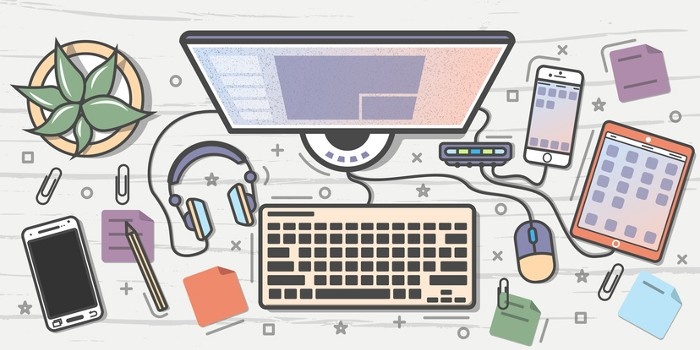
Written By: Bryan Foshee
Demystifying the Cloud
Cloud, Software as a Service (SaaS), on-premise, browser-based, multi-tenant, single tenant, private cloud—what is all this stuff, and how does it relate to your ERP selection?
It’s helpful to get your arms around what these terms mean, and more importantly, how they relate to your company’s specific requirements.
I’ve had numerous conversations with people who are evaluating ERP (or are thinking about evaluating ERP) and the most common questions always involve the cloud concept. We hear it everywhere these days, much more so than five years ago. However, cloud means different things to different people. So I always ask, “What does ‘the cloud’ mean to you?” or “What problems do you hope the cloud will solve?”
The answers I get are typically along these lines:
- I have no idea what it means! I just hear about it all the time, so thought I would ask.
- Isn’t the cloud a type of software that runs in a web browser (e.g., Chrome, Firefox, Internet Explorer, etc.)?
- It’s a solution I can access remotely (from another company location, hotel while traveling, etc.).
- It will let me access my ERP from my phone or tablet.
- It’s software that I can have “hosted” or “co-located.”
- It will let me access what I need without any server hardware on my premises.
- It’s software that I can pay for on a monthly basis.
That’s quite the range of answers, right?
When I am discussing ERP and the cloud with folks, I try to break things down to make sense of it all. I have found that framing the discussion according to three categories—deployment model, technology, and licensing model—brings some clarity to the conversation and helps define what the cloud means to you.
Deployment model
Deployment is the way you access your software for use. There are a variety of ways your ERP system can be deployed:
- On-premise: This is the traditional approach, meaning you have a physical server machine in your building, and your users (both in-house and remote) access the software directly from your location. No “cloud” involved.
- Cloud, multi-tenant: Your ERP database is in a shared or “multi-tenant” environment that exists completely online (no hardware)—you just need internet access to use the software. You are sharing infrastructure with other users of the same ERP solution, yet you cannot see any data other than your own. The vendor provides you with access and manages any infrastructure needed.
- Cloud, single tenant: This is also called a private or hosted cloud, meaning your database is in its own, private online environment. No sharing.
- Colocation: You purchase your own server and place it in a hosting provider’s data center. You are responsible for maintaining the hardware, and the hosting provider is responsible for providing you with internet access to your server. This option works for those who need control of their own hardware (perhaps if they handle sensitive information and don’t want any other entity to have access to the hardware), but do not want it in their own building.
Technology
Technology refers to how you access the ERP software. Below are some common methods:
- Internet browser: It’s pretty simple—you just need a web browser to reach the ERP system, and you enter your user name and password.
- Client/server: You click on the ERP system icon on your desktop computer (or tablet) and get access to the server that’s hosting the software.
- Terminal services: This is typically used for non-browser-based applications. You click a on terminal emulation icon, then log on to the ERP via the method described in the bullet point above. For example, emulation solutions include Citrix, Microsoft Terminal Server, Remote Desktop, etc.
Today, the ability to access all or part of your ERP remotely (from a tablet, phone, or device outside the building’s four walls) is a base requirement. Different ERP vendors have different technologies and approaches to connectivity, so this is an important discussion to have with the vendors you are evaluating. Ask them how they address remote access; or, more specifically, ask to talk to their customers.
Licensing Models
A licensing model is how you pay for the use of the software. In the ERP world, you’ll likely encounter two different licensing models: SaaS or perpetual.
With a SaaS model (Software as a Service), you pay on a per-user/per-month basis for access to the software, usually as part of a long-term commitment (such as 36 months). The terms of the agreement vary by vendor. It typically requires no on-premise, server-based hardware, only an internet connection and hardware to access the internet (PCs, tablets, etc.).
In this environment, your internet bandwidth and reliability come into play, so make sure those factors are considered in your evaluation criteria. As long as you continue to use the software, you will pay the subscription fee for the service. The SaaS model is great for customers who do not want any server hardware in the building (or the costs associated with that). Customers who choose this option like the low cost of entry and are willing to give up “managing servers” in exchange for a monthly payment that lasts for as long as they are using the software.
Perpetual is more of a “traditional” model, meaning there is a one-time fee for the software, along with an annual charge that is a percentage of the one-time fee to cover maintenance and support. Some vendors require you pay the annual fee; others allow you to decide on an annual basis.
The one-time fee is usually determined by the number of users allowed to access the software. There are two types of users: named and concurrent. Named User licenses are typically reserved for human beings, so if you have 10 people who need access to the software, you get 10 user names and passwords. In a concurrent user model, you could have as many user names and passwords as you want, but when the 11th person attempted to log on, the software would not allow it to happen
It’s a common misconception that a perpetual model is always tied to an on-premise deployment. Yes, that’s typical for this type of license model, but you can also deploy these solutions in the cloud by partnering with a hosting provider to reduce the costs of hardware and upkeep. Providers usually charge a monthly fee for access to your software, and they make guarantees about uptime or availability (meaning if you attempt to log on to the system, you can do so.) This is a good option if you do not want the ERP software provider to also be your cloud hosting provider.
It’s Not Bad Vs. Good
The feedback I sometimes get is “cloud” = good/new and “traditional” = old/bad. That is not necessarily true.
If you are talking with an ERP vendor that ONLY provides a SaaS/cloud deployment model, then it is pretty likely they will paint this picture for you—for obvious, selfish reasons. If you are talking with a vendor that ONLY provides a traditional model, then you may get the opposite.
Focus on one question: “What problem is the deployment model solving for me?” Asking yourself this brings more clarity to the conversation. Embedded in the SaaS argument is the idea that you don’t have to mess with hardware or hire someone to make sure the software is up and running… but what if one of your on-premise options doesn’t have a large footprint, or require a lot of maintenance? What if those hardware costs are already “sunk”? In other words, is an ERP system going to drastically increase your hardware and IT spend?
Don’t assume an ERP footprint is beyond your capabilities as a company. Fully explore that idea with your vendor. At the same time, if you want “out of the hardware business,” the SaaS model or hosting provider is probably the way to go. Keep all your options open, and ask your ERP vendors for their thoughts (keeping in mind what options they are presenting and inherent biases).
Related:
Infor ERP Software Review
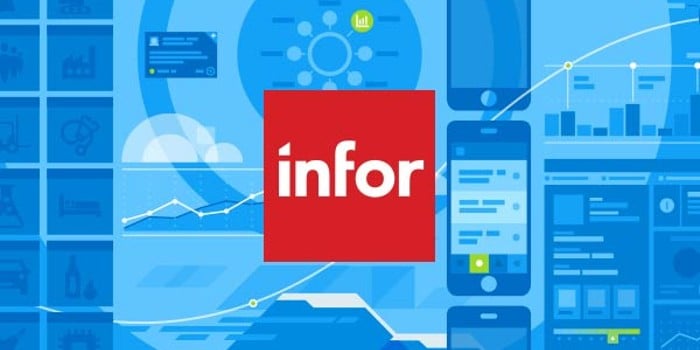
Written By: Tim O'Brien
Who or What is Infor?
Infor is the third largest ERP solutions provider in the world. Infor generates annual revenues of close to $3 billion and has over 90,000 customers. Infor employs over 15,000 people worldwide, across 168 offices, and is headquartered in New York City.
Infor also has one of the strongest and largest channel partner networks in the ERP market, with over 1,700 partners. The Infor Partner Network has stringent requirements for product certification, extensive communication (all partners have Infor liaisons they communicate with on a daily basis), and systemic integration by virtue of managing all customer and prospecting activity in Infor CRM. Visual South is a prominent Infor Channel Partner.
See Infor CloudSuite Industrial in action
See Infor VISUAL in action
What is Infor’s Channel Partner Network?
The Infor Channel Partner model is a hybrid offering that gives Infor customers the best of both worlds: The software is developed by a very large, stable software company; and the sales and implementation of the software is provided by a smaller, responsive Partner. The Infor Channel Partner network provides:
- Redundant customer support with Infor X-Treme Support and your Channel Partner account manager
- Strength of a world-class, billion-dollar organization pumping extensive research and funding into product development
- Local Channel Partner offering industry-specific expertise
- Local Channel Partner with added focus on customer service and long-term relationship
Visual South has been an Infor Gold Channel Partner since 1994. We have successfully implemented and supported hundreds of customers in manufacturing, manufacturing with distribution, and the service industry.
Infor vertical-centric solutions
Infor is unique in that it has specific business solutions for specific industry requirements. This approach differs from many other ERP providers, who typically have a single solution that attempts to be all things for every situation. The “one size fits all” approach often requires a monolithic-type system that’s expensive to deploy, difficult to maintain, and highly prone to failure. Here are just two benefits of Infor’s industry-centric solutions:
- You get a solution that has industry-specific functionality and is functionally rich. Infor ERP is designed to meet your requirements as is, versus needing multiple third-party bolt-ons and expensive customizations.
- The team of consultants and specialists implementing the software will understand the specific business requirements the Infor ERP modules are built to address.
If you are a manufacturer, Infor has a specific solution for you, such as Infor CloudSuite Industrial (formerly Infor ERP SyteLine) and Infor VISUAL. Many businesses and Infor know that a one-size-fits-all strategy doesn’t work and is not cost effective.
Infor's complimentary products
Infor also provides ERP complimentary products that eliminate the need to have multiple vendors interfacing third-party products together to create a complete solution. Infor uses Infor ION to allow for easy integration with its product suite. Infor complimentary products that allow you to grow into best-of-breed solutions include:
The short answer to “Who is Infor”?
The shortest answer to “What is Infor?” or “Who is Infor?” is this: an industry-leading company in the ERP market providing you with a functionally rich, industry-specific product, supported by those who understand the solution and your specific business requirements. When doing an Infor ERP review, you’ll find that the company is a safe and smart selection.
Related:
- 3 Things to Consider When Choosing an ERP Development Company
- Infor vs. SAP: Why Visual South Chose Infor
Infor's ERP systems
As mentioned before, the two Infor ERP solutions we sell for manufacturers are Infor CloudSuite Industrial (Infor SyteLine) and Infor VISUAL. Both solutions are designed for companies that use work orders to make or repair products. They have deep, broad functionality that starts with CRM, ends with financial statements, and covers everything in between, including sales, material planning, inventory control, purchasing, scheduling, barcoding, and multi-language and currency. Both Infor ERP systems integrate with Microsoft Office, run on a SQL Server database, and have open APIs for point-to-point integration with other products. If you want an on-premise solution, either product can be deployed that way. In addition, both can run on a private cloud. There are large active user groups and user conferences for both, too.
So…they sound alike, right? Well, in many ways they are. But some important differences exist:
- If you’re looking for a true, multi-tenant cloud offering, Infor CloudSuite Industrial is the one choice.
- CloudSuite Industrial runs in a browser, whereas Infor VISUAL runs on client-server architecture.
- There is a lot of overlap in size of company served by each product, but Infor VISUAL can easily scale to smaller companies, while CloudSuite Industrial can scale up to much larger companies (250+ users).
While there is a lot of overlap between the two products, there is also a fair amount of nuanced differences. We need to understand your business and what issues you are trying to solve to help guide you to the right product.
Want to see Infor's Visual ERP in action?
View a series of demo videos showcasing Infor Visual ERP.
Want to see Infor's Cloudsuite Industrial ERP?
View a series of demo videos showcasing CloudSuite Industrial.
Related:
- The Incomplete list of ERP Benefits & Advantages
- Most-Used Enterprise Resource Planning (ERP) Modules and Their Functions
- What an ERP System Does Not Include
How to Run an ERP Selection Process

The stakes are high
If you’ve gotten to this point, you probably realize your company should be looking for a new ERP system. You may feel that Infor and Visual South have something to offer you. But how do you go about researching and selecting a new ERP? First, it’s important to know and appreciate the seriousness of a project like this.
The ERP selection process is a big deal. The ERP you choose—which will likely be with you for the next 10 to 20 years—will affect almost every employee in your company. Pick one that doesn’t fit, and it will never fit. That could shorten the lifespan of the ERP in your company (to say nothing of your career there).
On the other hand, choosing the right ERP and investing in the proper training will pay off year after year. You will be able to increase revenue without increasing your overhead. Job costs, material requirement needs, and plant capacity information will always be available at your fingertips. Your company will communicate better, but have fewer meetings and fewer inter-company phone calls. This scenario isn’t a fantasy; we have helped many companies achieve this. Why can’t you be one of those companies?
Here is a checklist
That’s a lot of pressure to make a good decision and you may not know where to start. Better get an ERP selection criteria checklist! It will help you organize the process and make sure you don’t forget anything. That should appeal to your sense of order, and I have a good one for you. This ERP Selection Criteria Checklist is likely one of many you'll find online, along with other ERP evaluation checklists and ERP vendor selection criteria. Keep reading because a list alone (including mine) won’t give you everything you need.
Our ERP selection eBook gives you instructions
My ERP Selection Criteria Checklist is a companion to my eBook How to Select ERP…and not regret it. The eBook doesn’t just say what to do; it explains why you should take certain steps, and why you shouldn’t take others.
For example, here is an excerpt from the eBook where I discuss goals:
“The second step is to define 3-5 business goals you want to achieve for each business area. From that list, pick the top 3-5 goals for the overall business. Notice I didn’t say, ‘Goals that I want to achieve with software.’ Software is not a part of this step. You want to develop a list of what you want the company to achieve, not what you want the software to do. It may sound like a subtle distinction, but it’s not. If your mindset is on what the software will do, you will come up with items like:
- I want to email a PO to my vendor.
- I want a report that tells me who didn’t clock in today.
Emailing a PO to a vendor or producing a report aren’t goals, they’re features. Goals sound like this:
- I want to provide my customers accurate ship dates.
- I want accurate job costing.
- I want a 98% accurate inventory.
Notice how the goals sound far more noble than the features? That’s because they are. Features are usually accomplished with a few clicks of a mouse. Goals involve training and procedures, not just software.”
Related:
How to Implement ERP

The stakes are high
I repeated this headline for good reason: The stakes are high. Failure is an option and that’s why you need a plan and a process. Our eBook, ClearFocus: 6 Steps to Successfully Implement ERP, is exactly what you need to understand the implementation process.
Download the guide to successfully implement ERP
I’m not suggesting that reading a 39-page eBook is all you have to do to successfully implement your new ERP system. The eBook explains the process of implementation; it doesn’t develop the new procedures you will need. It doesn’t train you on the functionality of the software. Yet understanding the process is critical because knowing what you have to do and when helps everyone feel less “lost” during the process.
Download the eBook and read it. It will bring clarity to the complex and emotional topic of implementing a new ERP system.
Related:
- Why Evaluating ERP Implementation Consultants is as Important as Evaluating ERP Software
- 5 Characteristics of Successful ERP Implementations
- 5 Characteristics of ERP Implementation Failures
- ERP Implementation Strategy: Advice From 30+ Years of Experience



